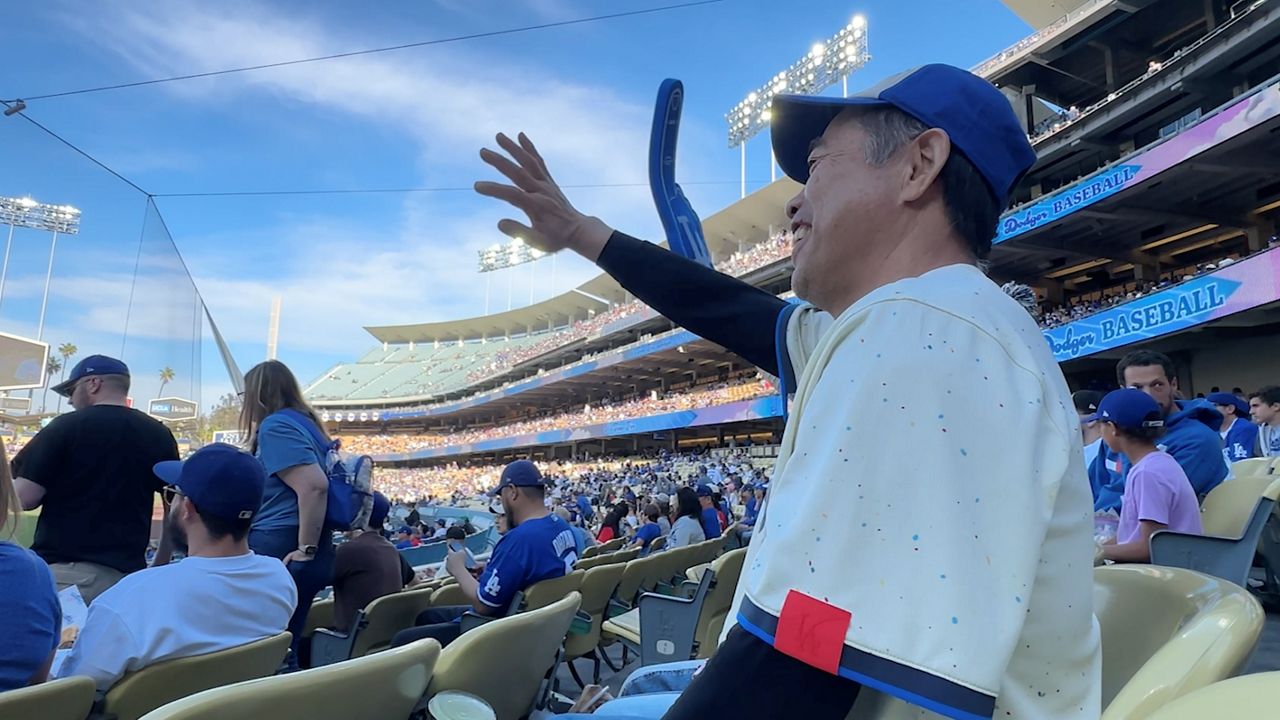BURBANK, Calif. — In a small Burbank studio that is a combination of a science lab and "Pee-Wee’s Playhouse," Ron Barbagallo has become one of the leading experts in animation art restoration.
An extension of his childhood bedroom, Barbagallo’s studio is filled with original artwork and memorabilia from some of the most beloved animated films of all time.
Barbagallo explained that growing up, he and his twin sister were obsessed with cartoons, and together they bought a hand-painted cel (the transparent celluloid sheet onto which animated characters are drawn) of the White Rabbit from Disney's "Alice in Wonderland" (1951). But tragically, Barbagallo’s sister died of suicide shortly thereafter.
“Before she died, we had purchased that white rabbit and when it arrived, it arrived damaged,” he siad.
Barbagallo added that that he then felt compelled to restore the damaged animation cel which led him down a rabbit hole of his own.
“I was absolutely devastated,” he said. “So I went to my local library and had some books pulled out about paint chemistry and art conservation, and I spent months going through these books.”
Over the years, Barbagallo has become one of the world's leading experts devoted to the ethical repair and scientific study of classic animation art through his company called The Research Library at Animation Art Conservation.
Recently, Barbagallo started an assessment of a cel from "Sleeping Beauty" (1959) — Maleficent posed with her raven, Diablo. Although the exquisite character design and masterful use of color is still intact, some of the paint has flaked off, and the cel plastic has yellowed over the decades.
Like a forensic detective, Barbagallo analyzes every minute detail of a piece, working with clients (many of whom are private collectors) to determine what needs to be done and how to repair the damage.
Animation cels were meant to be photographed once and were not built for posterity. After production, studios either put the artwork into storage (often incorrectly), threw the cels out or officially released some to the public for purchase.
“It isn't like when Jeff Koons or Damien Hirst makes a piece of artwork,” explained Barbagallo. “When that's done, Larry Gagosian puts it on a pedestal and sells it for millions of dollars and people know to take it seriously. Animation art is the other way around, where they make this stuff, and then just sort of throw it away, and then it ends up falling apart like this and comes here.”
Barbagallo has developed an impressive set of highly specialized skills, but his approach to restoration is measured and respectful of each piece of art. He is aware of the role and limitations of the restoration process.
"I’m making a painting of what the painting should look like," he said. "I am not trying to bring it back to the way it looked in 1940. That's impossible, and when people do that it's visually incongruent, and lazy and arrogant."
Unfortunately, some pieces are so damaged by time or mishandling that restoration is impossible. But in most cases, Barbagallo is somewhat of a miracle worker and can turn a warped, flaking cel into a near-pristine work of art.
“My work involves an absence of self,” he said. “And trust me, it's tedious, exhausting and painful sometimes to have to surrender when you're wrong 30 to 40 times in a row when something needs to be redone. I always say it's done when it's right, not like on a calendar schedule.”
While Ron Barbagallo’s studio might be small, his world is expansive. Delving into the stories and imagination behind the art is what he loves, and the results of his passions and hard-won expertise speak for themselves.











